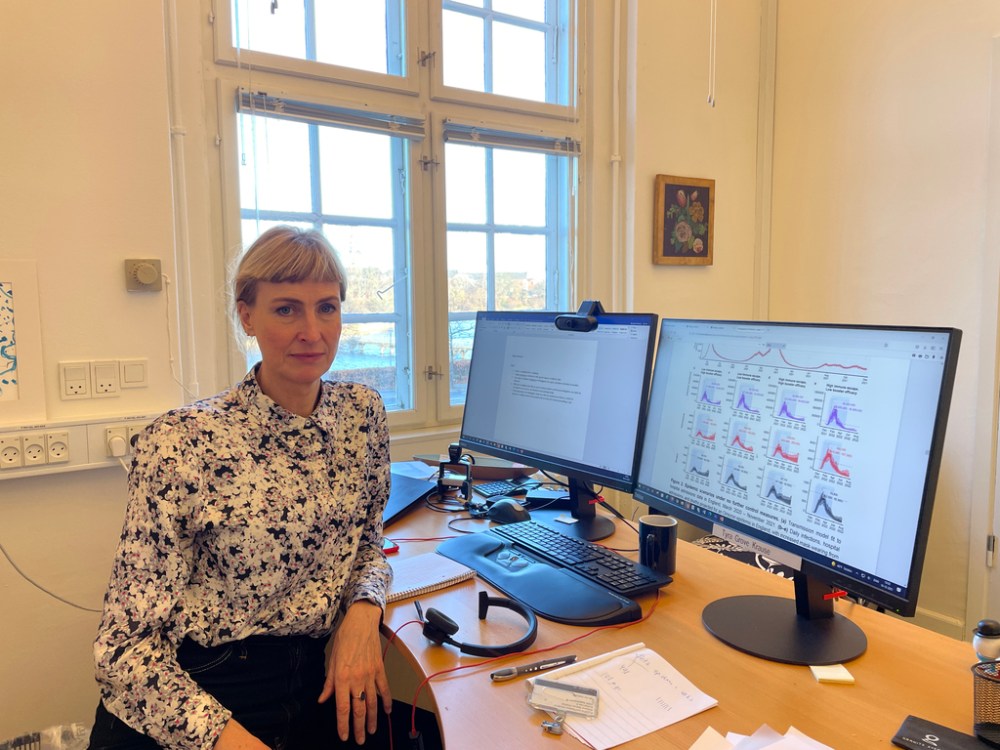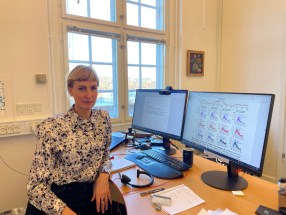Pandemic end near? There’s reason for cautious optimism
Read this article for free:
or
Already have an account? Log in here »
To continue reading, please subscribe:
Monthly Digital Subscription
$0 for the first 4 weeks*
- Enjoy unlimited reading on winnipegfreepress.com
- Read the E-Edition, our digital replica newspaper
- Access News Break, our award-winning app
- Play interactive puzzles
*No charge for 4 weeks then price increases to the regular rate of $19.00 plus GST every four weeks. Offer available to new and qualified returning subscribers only. Cancel any time.
Monthly Digital Subscription
$4.75/week*
- Enjoy unlimited reading on winnipegfreepress.com
- Read the E-Edition, our digital replica newspaper
- Access News Break, our award-winning app
- Play interactive puzzles
*Billed as $19 plus GST every four weeks. Cancel any time.
To continue reading, please subscribe:
Add Free Press access to your Brandon Sun subscription for only an additional
$1 for the first 4 weeks*
*Your next subscription payment will increase by $1.00 and you will be charged $16.99 plus GST for four weeks. After four weeks, your payment will increase to $23.99 plus GST every four weeks.
Read unlimited articles for free today:
or
Already have an account? Log in here »
Hey there, time traveller!
This article was published 10/01/2022 (1432 days ago), so information in it may no longer be current.
Could Omicron be the variant to end all coronavirus variants?
According to Tyra Grove Krause, the technical director of Denmark’s State Serum Institute, we are quickly approaching a point in the pandemic narrative where the end is in sight.
Seriously.

If you’ve never heard of Krause, you’re not alone. Until last week, she was just another courageous but anonymous expert. And then, one week ago, Krause made a surprising prediction in an interview with a Danish television network that catapulted her to the top of the global pandemic-modelling charts.
“(Omicron) may be what is going to lift us out of the pandemic, so that this becomes the last wave of corona,” Krause said.
Krause went on to say that hospitalizations in Denmark were expected to peak in mid-January, and that by March 1, it’s quite likely that “infection will start to subside and we get our normal lives back.”
It’s impossible to tell from the explosion of news stories that were published in the wake of those comments whether Krause attached any caveats to her bold prediction. That should lead most people to fairly ask: is her optimism warranted?
First, the good news.
Krause’s analysis is consistent with preliminary data from countries further along the Omicron thrill ride that show, following a rapid rise in cases, there was an equally rapid decline.
South Africa was one of the first countries to report widespread Omicron infections. After an explosion of new cases there in November, there was precipitous drop, with a relatively low number of deaths and hospitalizations.
Want even more fuel for the optimistic fire? Some epidemiologists such as Krause have theorized that a combination of high vaccination rates and large numbers of Omicron infections could help us achieve herd immunity, the point at which so many people are resistant to the virus that it dies out.
Finally, there is a school of scientific thought that most human viruses become, over time, less deadly and contagious.
Now for the bad news.
The theory that Krause and others have proposed is but one of several that are possible at this stage in the pandemic. It also tends to overlook several important facts about COVID-19 and the countries that have been hardest hit by Omicron.
First and foremost among those facts is the reality that Omicron performs much differently in different countries.
Although Omicron has had a relatively mild impact in South Africa, it has been wreaking havoc in countries like the United States, which has seen both a 200-per-cent increase in the 14-day rolling average of daily cases (now over 677,000) and a 16 per cent increase in daily deaths (now well over 1,500). Although deaths and hospitalizations are still below the winter surge in 2021, the gap is shrinking fast.
Why would Omicron hit the U.S. harder than a country like South Africa?

South African health officials note that an astounding 70 per cent of the country’s population had already been infected by and survived pre-Omicron variants, which may have provided additional immunity. South Africa is also a very young country, with a median age of just 28.
The U.S., on the other hand, is a country with a relatively low vaccination rate and a high level of chronic, lifestyle-related health problems.
All of which is to say that as we approach the second anniversary of COVID-19, it’s really too soon to start proclaiming the end of the pandemic, particularly since the virus that causes COVID-19 has been very unpredictable over its lifespan. That fact alone is prompting other equally qualified experts to be more cautious in their predictions.
Francois Balloux, a computational biologist at University College London, told Nature magazine he is concerned about the number of experts suggesting all viruses ultimately evolve to become more transmissible but less virulent. “There’s this assumption that something more transmissible becomes less virulent. I don’t think that is the position we should take.”
To Balloux’s point, there is an entirely different school of epidemiological thought that suggests a perfect-storm variant — highly contagious, deadly and resistant to existing vaccines — is still possible as Omicron spreads and replicates in hundreds of millions more people around the world.
The real reason to be optimistic at the 22-month post in the pandemic is that after multiple waves of COVID-19, we are developing muscle memory around the most important mitigation strategies.
We’ve accepted masks and hand hygiene as the price to pay for getting to go out and share indoor spaces with others. We’ve also learned how to lock down, when it’s absolutely necessary.
Our health-care system has also learned how to acquire and stockpile masks, gloves and gowns to protect health-care workers.
Everyone wants Omicron to be the variant that blows out the raging fire of COVID-19. But we can’t assume that will happen, and we certainly cannot stop doing whatever we can to stop the spread of this disease.
At this stage in the pandemic, we must always examine our optimism through the lens of sober, practical analysis. In other words, hope for the best and continue planning for the worst.
dan.lett@winnipegfreepress.com

Born and raised in and around Toronto, Dan Lett came to Winnipeg in 1986, less than a year out of journalism school with a lifelong dream to be a newspaper reporter.
Our newsroom depends on a growing audience of readers to power our journalism. If you are not a paid reader, please consider becoming a subscriber.
Our newsroom depends on its audience of readers to power our journalism. Thank you for your support.
History
Updated on Monday, January 10, 2022 10:10 PM CST: Fixes typo.







